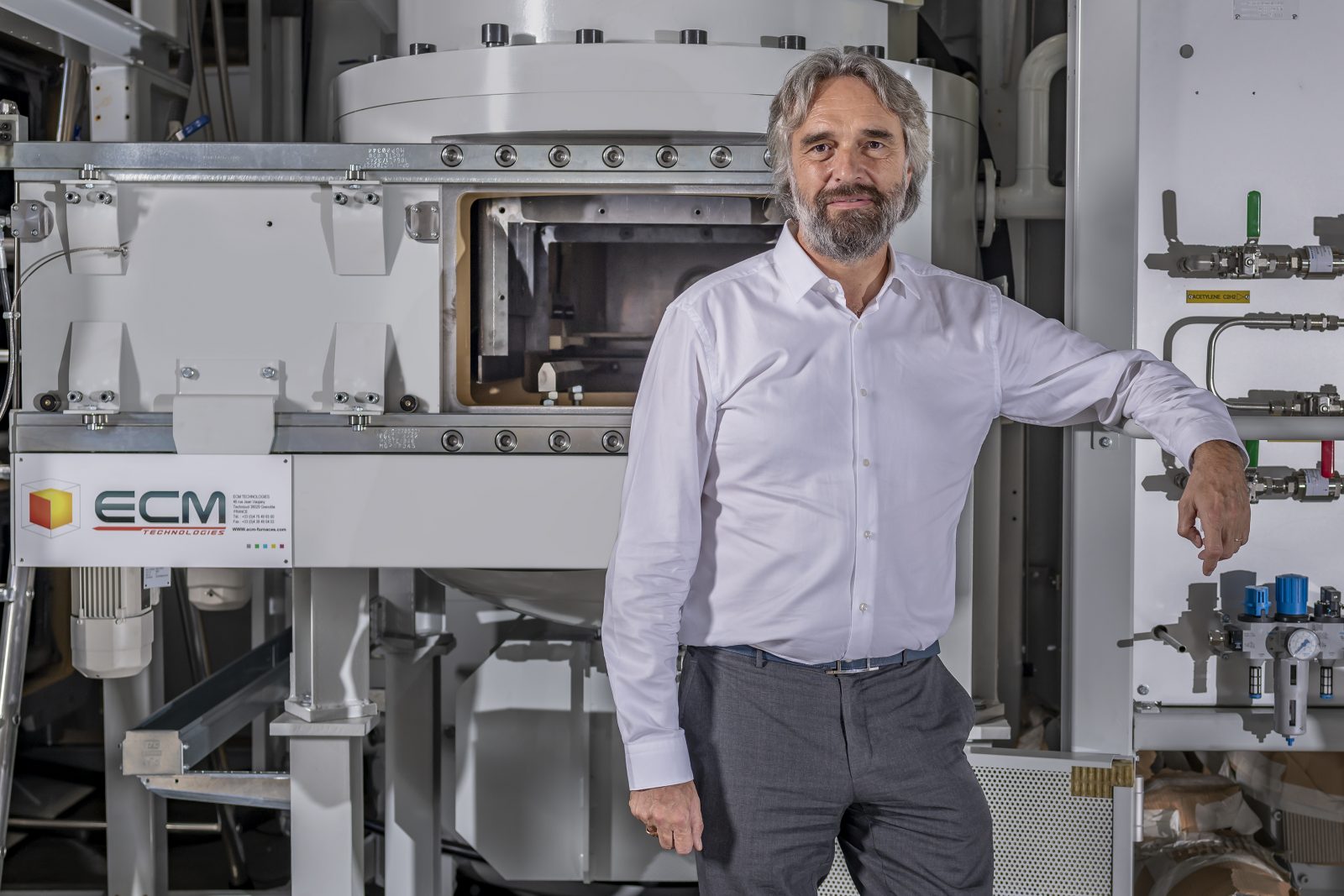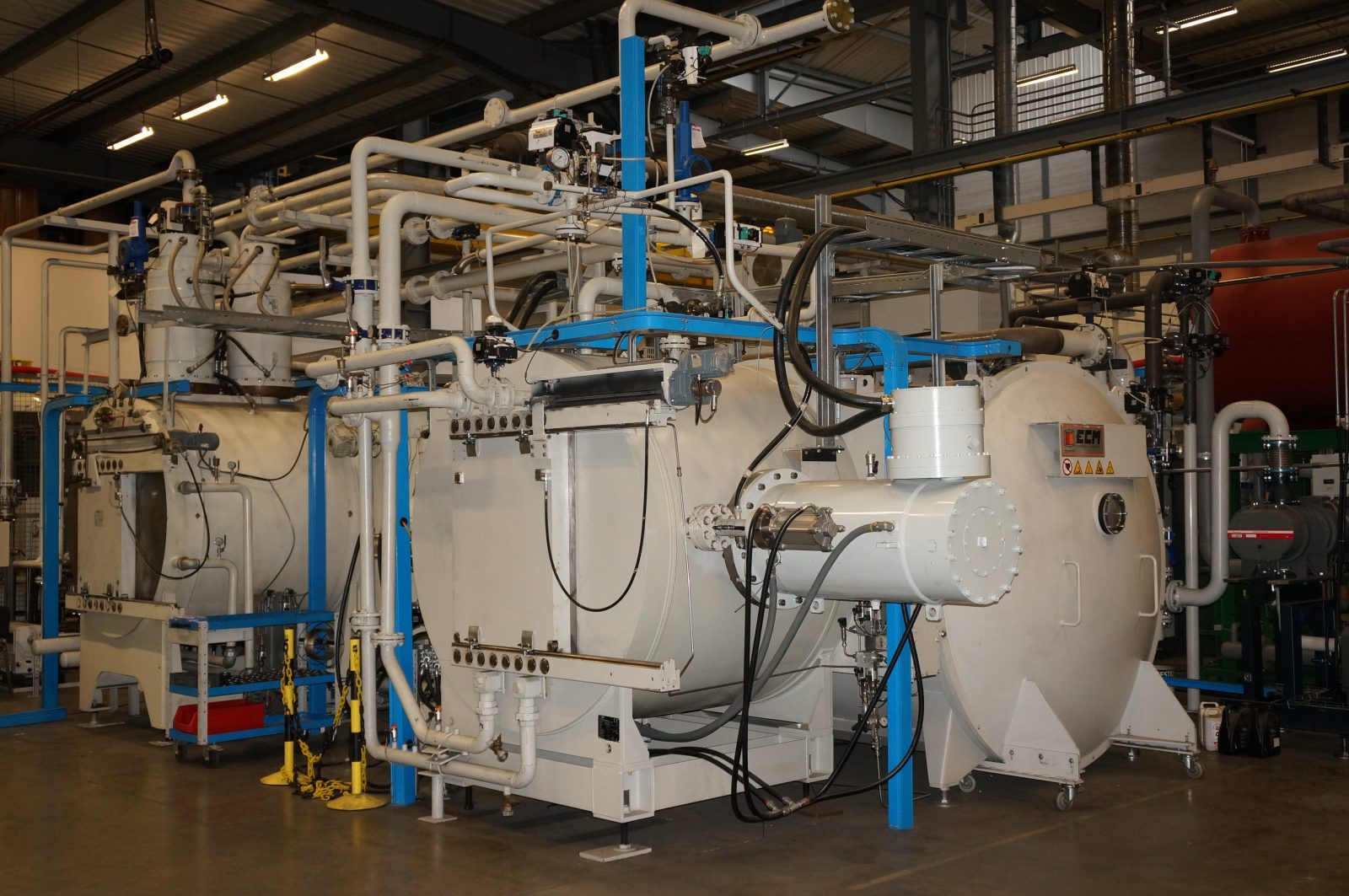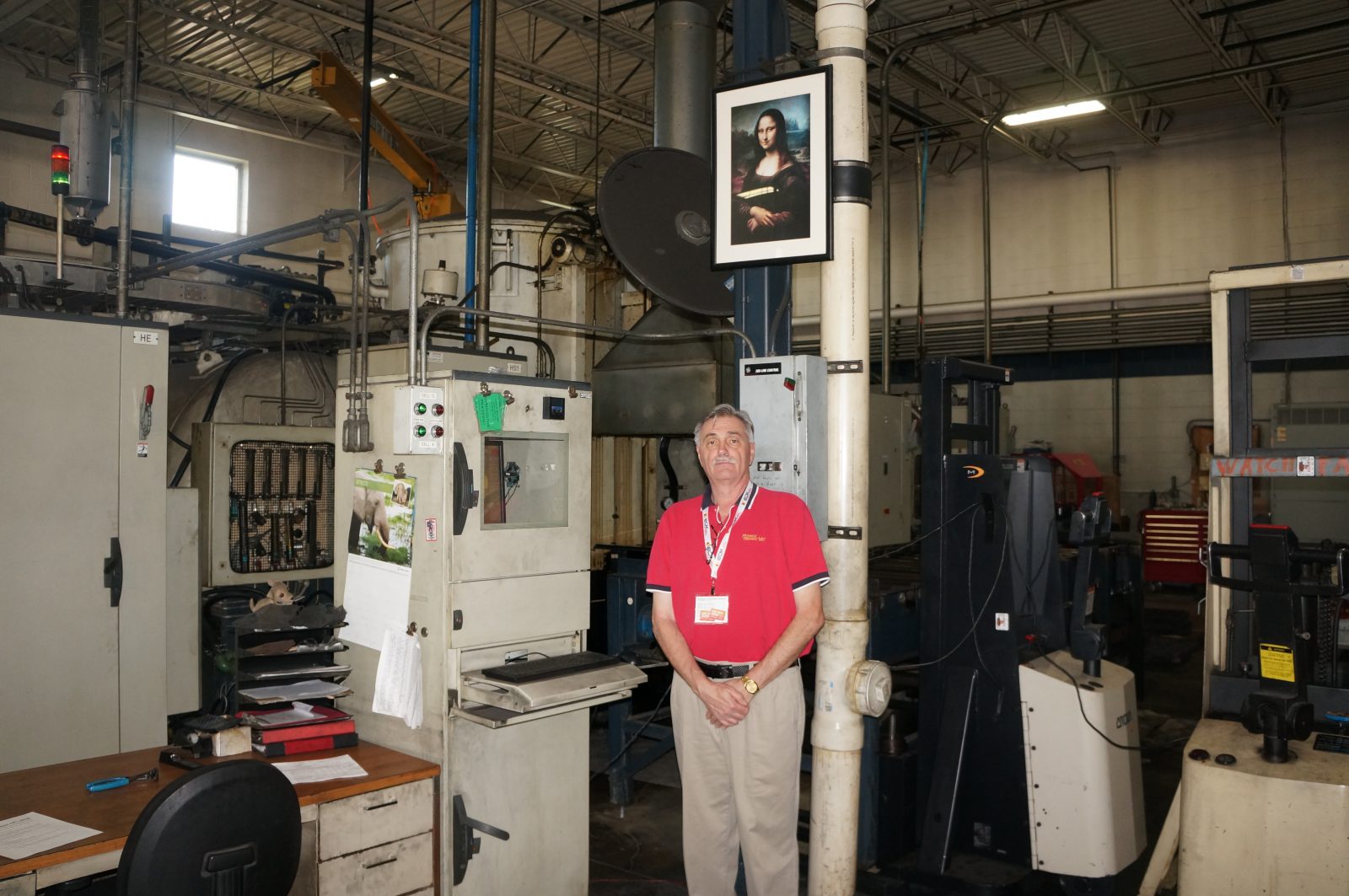Laurent Pelissier, ECM Interview
Furnace manufacturer ECM based in Grenoble, France is one of the larger furnace builders in the world as you can see in this interview. We had the privilege of meeting and interviewing the CEO of the company, Mr. Laurent Pelissier at his headquarters in Grenoble, France last week.
Laurent I believe you got into this industry for the same reason as many of us do-parents who were also involved in heat treating. Could you tell us about it?
“Yes it is definitely a family business! My father, Mr. Francis PELISSIER, created the foundation of today’s ECM in 1984. After doing an engineering degree I joined him and the ECM adventure 30 years ago, in 1988. I covered many jobs in the company and this gave me a strong understanding of how it works. At the end of 2008 ECM got a new start in its current structure and my wife Marlène joined ECM then as HR director and administrator. My son Arthur, after completing the same engineering degree as me, joined ECM Group in 2017 as Business Development Manager, and he has now moved to a project manager position. Some people in the company I have known their entire professional lives and if you ask around in the workshop you will see that many technicians have spent their entire working career at ECM. We will be celebrating our 10 year “anniversary” March 30th of this year to mark the moment and all employees will be bringing their families for the celebration.”
Can you tell us about ECM-the history of the company, how large the company is in terms of sales, number of employees etc?
“To give you an idea about our vision, the ECM GROUP motto is: “Industry leader in the design, manufacturing & installation of heating treatment industrial furnaces.” Our 2017 turnover was 84 M€ (90% was international). The group employs about 350 people. Shares are mostly held by family, a close friend and management. However in order to help our development we opened about 15% up to institutional and private investors. We have 5 manufacturing sites in France and 1 in China and 8 international subsidiaries: ECM CHINA (Beijing), SEMCO Inc., USA, Texas, ECM USA (Kenosha WI), ECM INDIA (Bangalore), ECM KAZAKHSTAN (Astana), ECM GREENTECH MIDDLE EAST (ABU DHABI), ECM GMBH (Saarbrücken, Germany) and SEMCO in Singapore.”
When I think of ECM I think of Low Pressure carburizing-is this a true statement and if it isn’t what other types of furnaces does ECM manufacturer?
“It is true that ECM has been a recognized global industry leader in Low Pressure Carburizing (which is roughly 50% of our production). Now the strength of the group also comes from our ability to adapt our leadership and build competencies in other heat treating areas. So right now we are able to design all kinds of furnaces: vacuum furnaces, special furnaces, crystallisation furnaces for PV industry, melting furnaces, atmosphere pusher furnaces, VPA furnaces, Photovoltaic semiconductor furnaces and Rapid Thermal Processing (RTP) furnaces.”
I have lost track of the number of carburizing cells you have produced over the years but I know it is impressive. Care to tell us the exact number?
“We have 1280 carburizing cells installed around the world”.
Does this make you the largest low pressure carburizing furnace supplier in the world?
“Yes we can say so: with our INFRACARB® patent we are the worldwide leader in this field.”
A number of years ago the prediction was that low pressure carburizing was going to take over the heat treating industry at the expense of atmosphere carburizing. While to some extent this has happened in two specific areas, automotive transmission gears and fuel injection nozzles it does not appear that the technology has been adapted in many other areas. Would you agree or disagree with this statement?
“Regarding LPC, the automotive industry is still the main market but not the only one anymore. We believe that our new ICBP FLEX, ICBP NANO and DUO machines (which are specifically targeted to heat treaters) will accelerate this market diversification as we are seeing some strong interest from many other industries.”
Let’s change gears a little bit-I remember it as a very interesting story about how ECM got started in North America all those years ago. Care to give us all the details?
“Well the interesting story is probably the human side of it. We first started to be interested in the US when we figured there might be some opportunity to export one or 2 furnaces! Then to cut a long story short we (Yvan Trouillot, Dennis Beauchesne & Fred Otto) built commercial heat treater MTV and ECM (both in Wisconsin) at the same time in 1998. The starting point was one specific customer order …and like you North Americans like to say: the rest is history! ECM USA is our most vibrant foreign subsidiary because of its existence and recognition in the heat treating community.”
Do you still have an affiliation with Midwest Thermal:
“Of course! Mostly thanks to our history and also the incredible support the MTV / Otto family has given us throughout the years, we hope they will always remain our partners.”
What are the main geographic areas for ECM when it comes to sales and installations?
“ECM has been able to address all geographic areas, all countries. No region is predominant and we usually find a pretty balanced ratio between the Americas, Europe and Asia. Depending on the local economic climate, some years the North and South American market is the largest and some years the European market is the largest but typically it is 1/3 Asia, 1/3 Europe and 1/3 the Americas.”
Do you notice a difference in attitudes in different markets? For instance does an American or an Asian have different requests or needs which differ from a German or a French customer?
“We could probably talk about this topic for hours! Dealing with complex international projects has taught our teams that yes indeed there are differences and they can be divided into 2 main parts: specifications and regulation differences on one side and cultural differences on the other. Now you see where I am going with this idea: depending on their culture customers do not address specifications and regulations the same way!! We have a very diverse workforce in ECM and this often helps us to at least to reduce some of these cultural challenges.”
There is a lot of talk these days about single piece part flow, meaning that rather than our tried and true model of a batch furnace processing a load of parts furnaces would be handling parts one at a time on a continuous basis. Do you see this as the future of heat treating?
“This can also be debated for a long time! We have definitely seen some market requests for smaller batches and have started developing some products around this need a while ago. Our ICBP NANO product category (now fully marketed) is able to produce parts in an almost completely robotized manner and with extremely low distortion. This system has been designed to work in single piece part flow production scenarios. We are very proud of this product range which is also getting a strong signal from various markets.”
The last question leads me to ask this one; on a regular basis I am asked about “lights out” heat treating meaning a completely automated furnace (s) with little or no human interaction. What is your opinion-is this the future, the distant future or not in the future?
“This is a medium term goal. In preparation we have created a robotics business unit to integrate robots into furnace automation systems. We are also working on Factory 4.0. As an organization we have made a lot of investments already in automation to help our customers. First we have a full robotics division which is integrated within the group. This has already helped us design a totally autonomous installation. ECM currently has several installations which are completely automated and in production. Second, we believe that integrating the furnace and the robotics will provide better results for our customers.”
Out of all the numerous processed available, gas nitriding, plasma nitriding, vacuum heat treating, gas carburizing etc., which do you believe enjoys the brightest future with the most growth?
“I firmly believe that LPC is the future of heat treating which is why we concentrate on this technology. We have created both modular and batch solutions especially with our new DUO system which is able to replace a standard batch IQ furnace. LPC has demonstrated that it is environmentally friendly with low CO2 emissions, part quality second to none, safer operation and a better working environment for the operators. New car technologies are showing real opportunities: for example in hybrid related products there will be a need for low distortion gears and improved metallurgy which will mean heat treaters will need to invest in new technologies to meet these tougher requirements. We are also enjoying repeat orders for ICBP systems.”
2018 was a tremendous year for most of us involved in the worldwide heat treating industry-what fearless predictions would you like to make about 2019?
“2018 was an excellent year for ECM and we are expecting that 2019 will be even better. So far our order book is showing excellent promise of major investments in all heat treating markets.”
And last but not least what does the future hold for Laurent Pelissier and ECM? What can you share with us today about where you are going?
“ECM believes in innovation. This is what has led us to where we are now. Right now are working on a number of projects around preventative maintenance, connected machines, or Factory 4.0 just to name a few. As an example ECM consistently invests 10% of our sales into our R & D efforts. But we are very flexible in our R&D path and what we consider innovative today might become something totally different altogether. In the short term 2019 should see some new LPC type batch furnaces (our DUO product) being installed that will replace the current generation of furnaces. Going forward we see our growth coming from a combination of new products and external acquisitions.”

Laurent Pelissier , CEO, ECM

ECM, Grenoble, France

Fred Ott, Midwest Thermal-Vac, Kenosha, Wisconsin, USA
